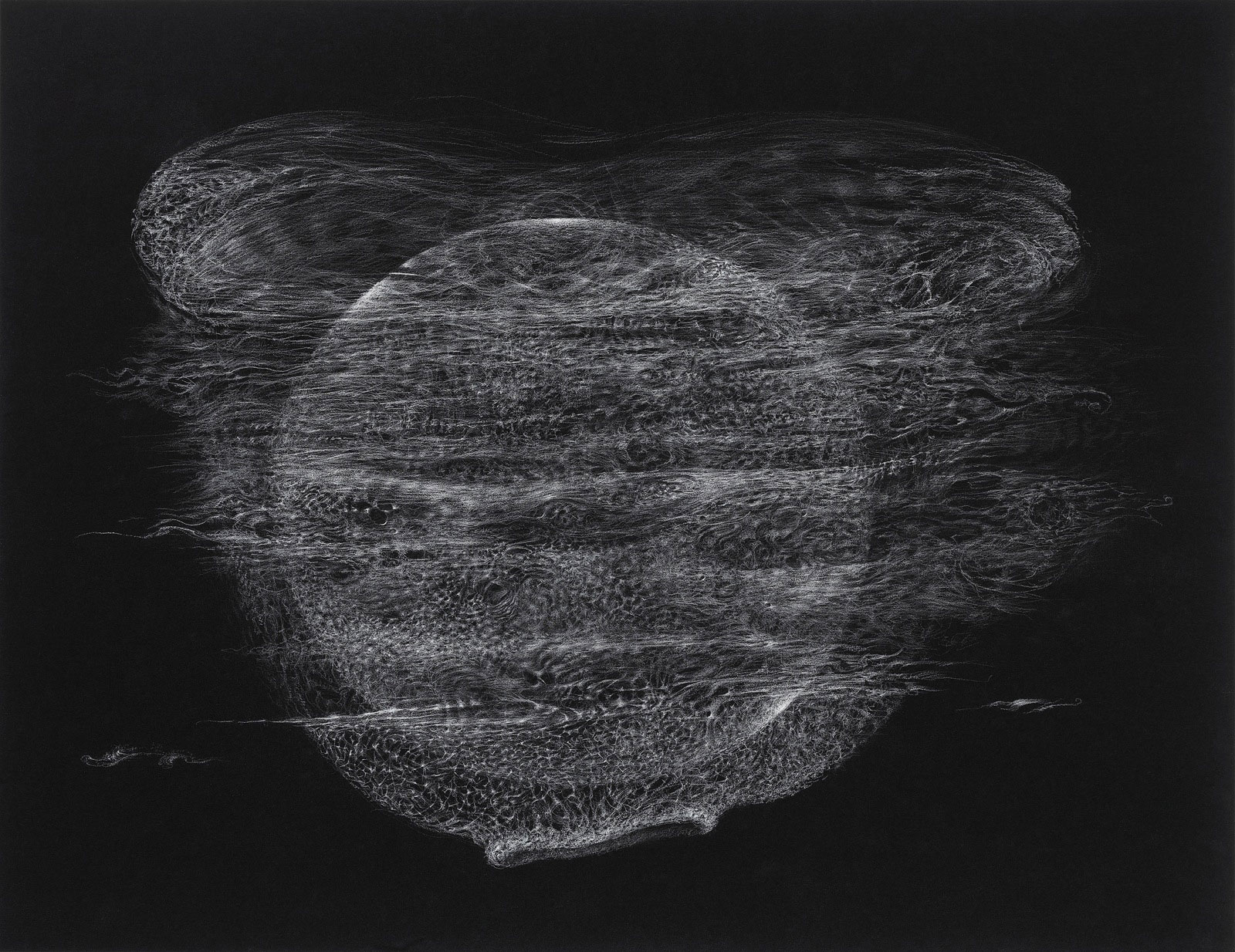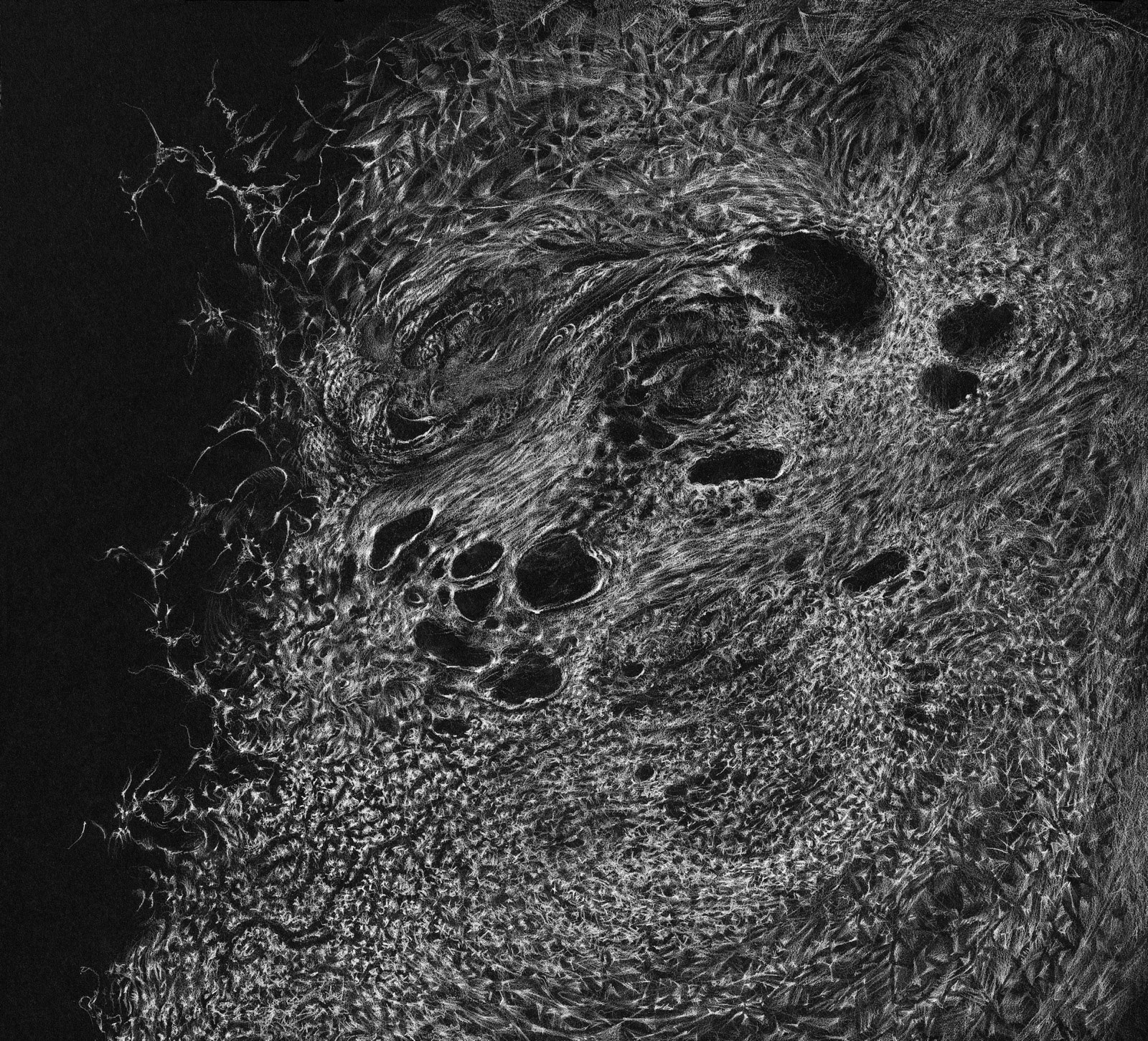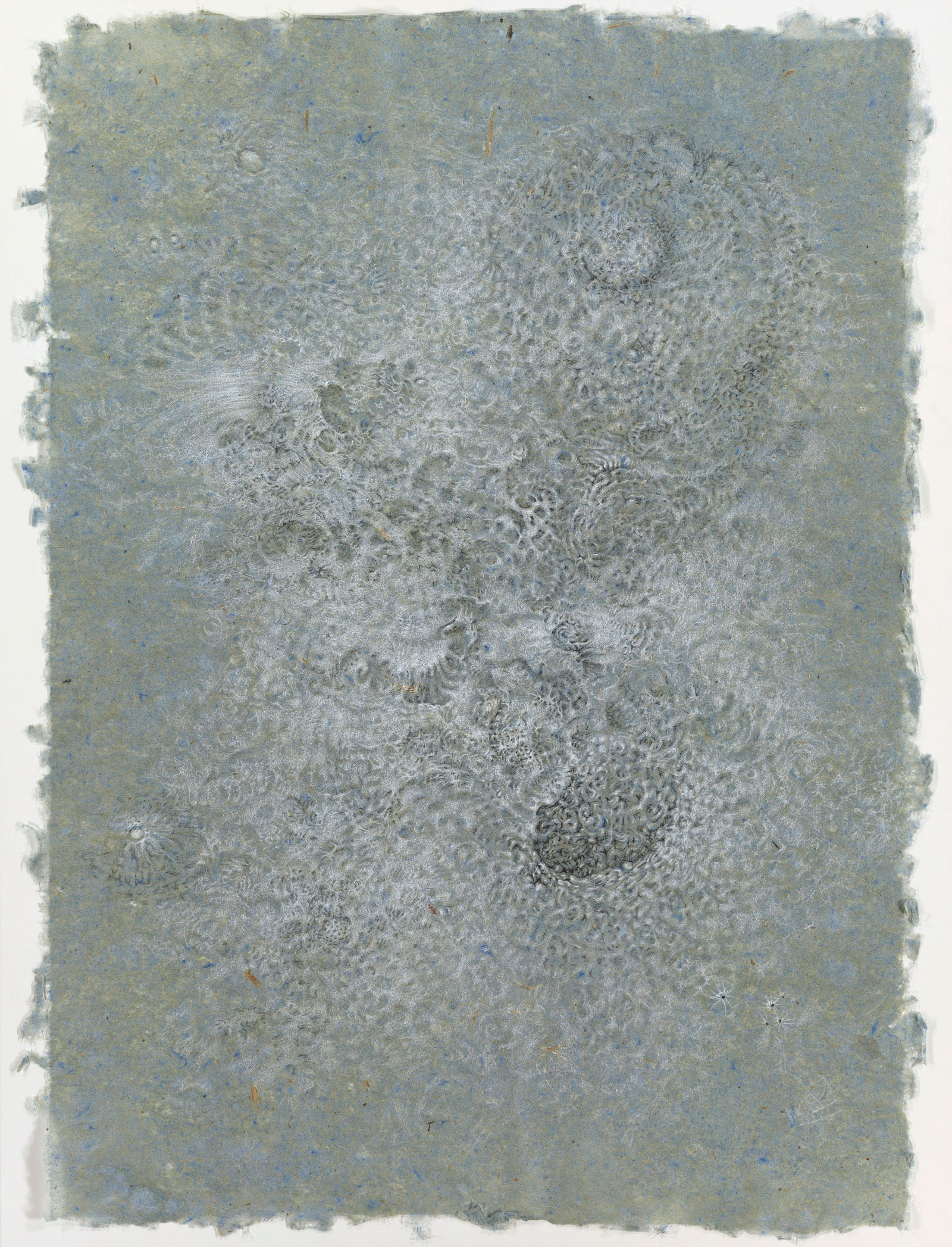
In the Q&A below, Burgoyne expands on this intention by describing her approach, factors that led her to her current body of work, and how music plays a significant role on her process.


One who was looking at your work could easily think that certain sections were tree trunks or cobwebs or any number of other non-abstract things. Are there narratives or subjects to be found in your work, or are they simply geometric or pattern-based?
Yes, there are tree trunks and cobwebs. And they are also geometric and pattern-based. I love the perceived universe as a place where everything follows mathematical structures.
How much of your work is additive versus subtractive?
The drawings are 98% additive. Erasure dulls the lines and mars the paper, so I use it sparingly only to reduce occasional over-brights.
What kind of setting do you work in? I would imagine that work as contrasting and fine as yours would need a setting that would allow you to see well, spend a large amount of time, etc.
There is no art studio, so I work at home where it’s comfortable, chair or couch. On my lap is a pillow and on top of the pillow is a piece of foam-board supporting the drawing. I wear reading glasses and have a lamp nearby. A devoted time commitment is inevitable for these drawings. There is music on the stereo, always.
What is it about black and white and grayscale that most interests you? Do you ever consider working with colored paper or pencil?
Not sure why, but I flourish under the limitation of monochrome. I hope to offer an alternative to the abundance of sharp contrast and unrelenting bold colors that fill our urban situation. It’s not that I don’t enjoy the oomph of Helvetica signs and neon spandex; I just want to have another choice. There are a handful drawings I’ve made using red, gray, and brown paper with various colored pencils, but black paper is the mainstay.
ARTIST INTERVIEW CONTINUES BELOW

How do you feel about the spreading of your work upon the internet, as it
is obviously of a type which gets somewhat lost in translation?
Sometimes the internet is the only venue available. It’s nice connecting with people who appreciate what I’m up to. Without the internet exposure I wouldn’t have become acquainted with some wonderful Eastern European artists who I feel artistic kinship with.
I would like to talk a bit about Scroll; is that the largest piece you’ve
worked on, and how difficult was it to gain perspective on it?
Scroll was the largest before February, when I began working on Forest, a 30-foot-long drawing that is slowly building. Time makes perspective easier. When I work on a drawing for an extended period I become a lost myopic, so I hide the drawing from view for a day while I’m running errands. When I see it again portions become clear and the drawing tells me what to do next.
ARTIST INTERVIEW CONTINUES BELOW
Bette Burgoyne – Forest (progress photo)


Bette Burgoyne – Scroll
Zhang Zeduan – QingMing ShangHe Tu
What led to the decision of using video to document this particular piece?
I wanted to share Scroll with people, and a video on YouTube and Vimeo seemed a good way to do it. No actual videotaping took place. A large .tiff file was made from the drawing at Art & Soul, and it was edited andtransformed into a panning video by 4th Wall Films. There is a lovely panning video of a Chinese landscape painting by Zhang Zeduan you should see.

You gained permission from Animal Collective, Rough Trade Publishing, and Fat Cat Records to use the track in the video; how difficult or involved was that process?
Animal Collective received my email describing what I had in mind for their beautiful languid song “Visiting Friends”. Included was a link to my site. They emailed back, “Looks cool”, and included email addresses in order to get full clearance of “Visiting Friends” from Fat Cat and Rough Trade. It all took about 2-3 weeks.
The work on your website only spans back to 2009. How has your work evolved through the years?
I created sculpture and installation for several years before a series of deaths and heartbreak altered my life course. The early 2000s was a four year period of creating scherenschnitte from black paper. After the 2008 bout with cancer and chemo, I began to create drawings from a place essential, shedding the layers of cleverness that was part of the earlier work.
As an older artist, how do you feel about the Seattle art scene right now — how it has changed, where it is, and where you think it is going?
It is good see more women artists receiving recognition, maybe we’ll achieve balance someday? My favorite thing in the current Seattle art scene is First Thursday Art Schlock.
Ω








